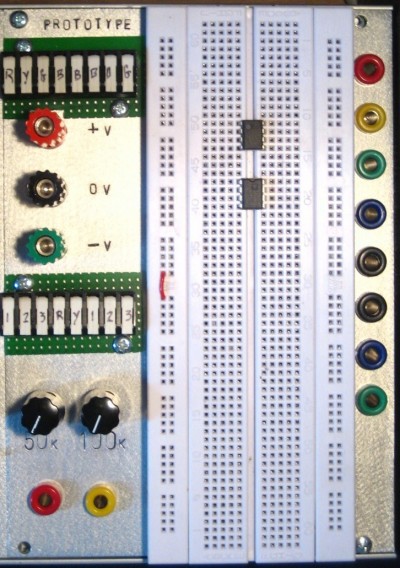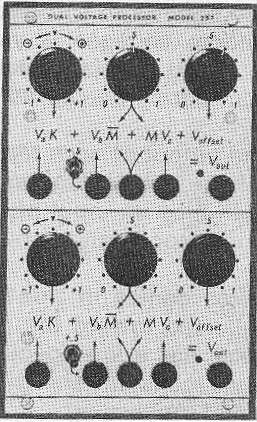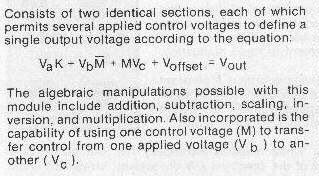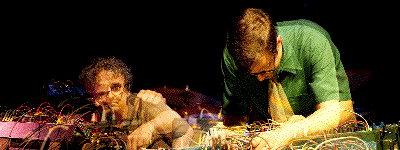Prototyping/Analog Computer Modules
I’ve been having some great correspondence with Jason R. Butcher about Buchla synthesizers, analog computers and chaotic synthesis techniques. He reminded me of a very special version of the Buchla 200 Music Box, created by Don Buchla for an electronics and cello work by Ami Radunskaya called Sili-Con Cello in about 1978 or 1979.
One of its features was a breadboard prototyping module, seen in the upper left corner. Here, Buchla created custom circuits to respond to the performance gestures of acoustic instruments in the era before Pure Data or Max/MSP.
[Photo from The Audities Foundation]
Jason showed me his own version of the breadboard module, which just happened to look a lot like a panel I spec’ed out last night. Here’s the completed module mounted in the case this afternoon. Each panel component (potentiometers and banana jacks) is routed to the terminals (the green areas), which in turn can be jumpered anywhere on the breadboard.
My first task with this module will be to design a “Buchlidian” style control voltage processor. It will contain one section with an attenuverting/bipolar input with offset and another section with an analog multiplier. The panel will have two of each section. It can do much of what the original Buchla 257 Voltage Processor does: addition, subtraction, multiplication, division…
The only thing it won’t be able to do is the “transfer control” (i.e. interpolate) between the two different applied voltages (although this could probably be done with a pair of Voltage Controlled Amplifiers rigged up as a cross-fader).
This new processor module represents one section of a larger analog computer project I plan to use for developing new chaotic synthesis techniques. The other sections would be a set of integrators (planned), an analog logic section (completed) and a suite of tools for working with digital pulses (comparators, clock dividers, digital logic and digital noise–all planned).
Of course, this prototyping module could also be used to lay out other kinds of non-linearizing functions to stick in the chaotic feedback paths. I’ll document those as they come up.
Discussions over the last year or so with Martin Howse continue to remind me that analog computers evolved out of the V2 rocket program and were mainly designed to control the flight path of missiles. In fact, just about anything used in electronic music has some sort of seedy military past. Our art is nothing more than a byproduct of the quest to more accurately drop bombs on each other, something I’m sure both Stockhausen and Kraftwerk were acutely aware of…
As for Mr. Butcher, check out his wild, live analog synthesizer project with Don Hassler. Buchla 200 Music Box vs EMS Synthi A, highly recommended!
Hassler/Butcher, Eyedrum, Atlanta 31.03.10
Tags: chaos, photo, synthesizer


